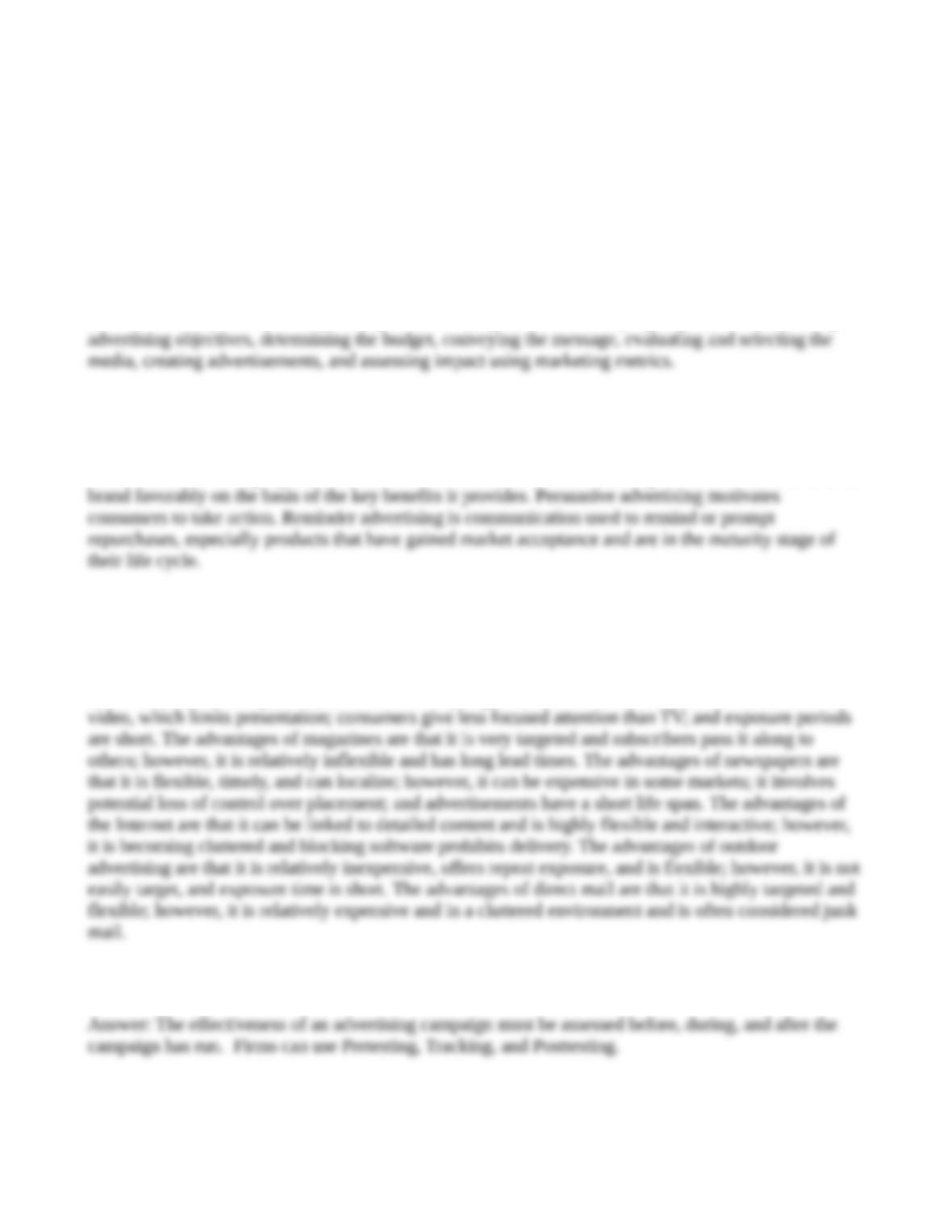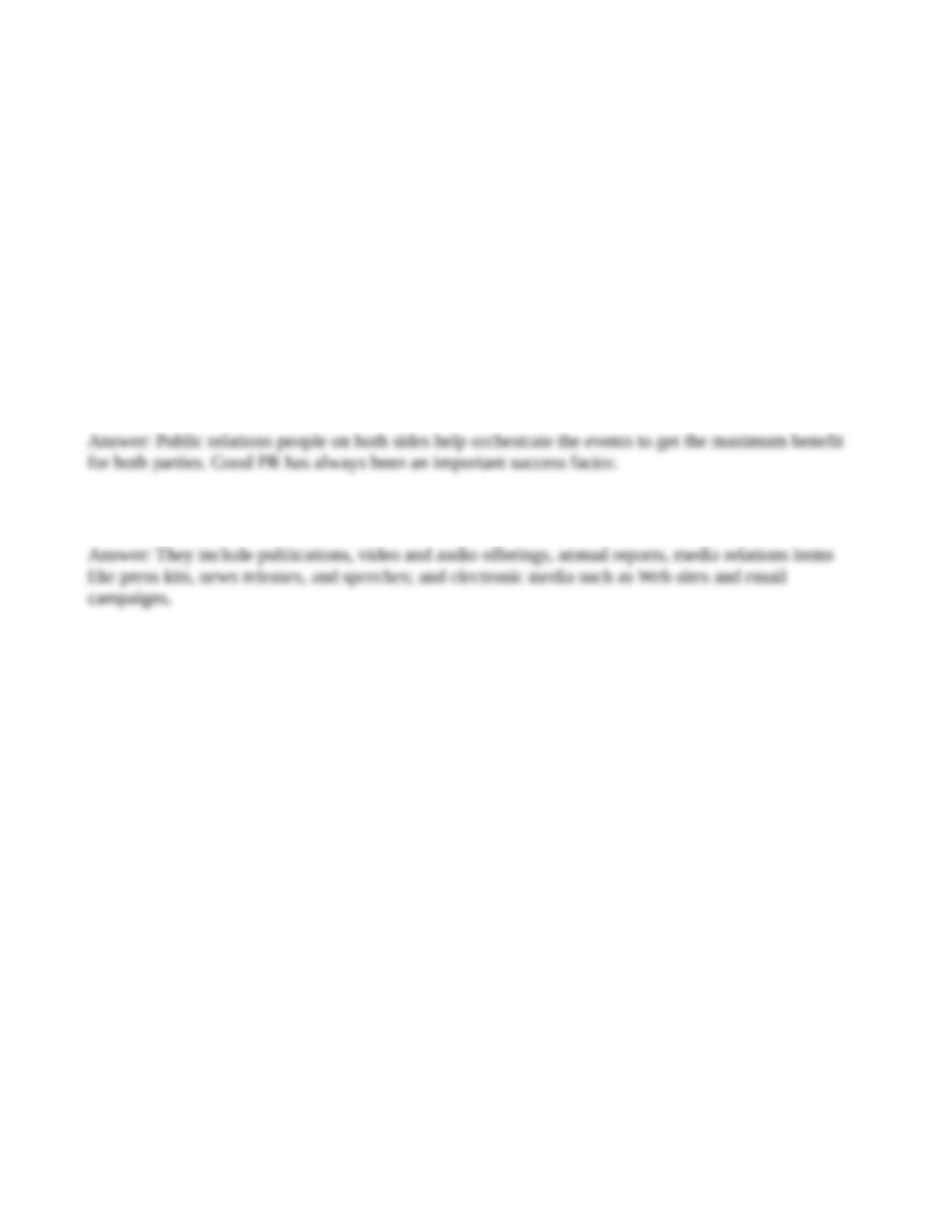choosing media, firms must match their objectives to that channel. Also, certain media are better at
reaching a particular target audience than others.
LO5 Identify agencies that regulate advertising.
Advertising is regulated by a plethora of federal and state agencies. The most important federal
agencies are the FTC, which protects consumers against general deceptive advertising; the FCC, which
has jurisdiction over radio, television, wire, satellite, and cable and covers issues regarding the use of
tobacco products and objectionable language; and the FDA, which regulates food, dietary supplements,
drugs, cosmetics, and medical devices.
LO6 Describe the elements of a public relations toolkit.
A variety of elements compose a firm’s public relations toolkit. They include publications, video and
audio programs, public service announcements, annual reports, media kits (e.g., press kits), news
releases, and electronic media (e.g., websites).
LO7 Identify the various types of sales promotions.
Sales promotions are special incentives or excitement-building programs that encourage purchase and
include coupons, deals, premiums, contests, sweepstakes, samples, POP ¬displays, rebates, and product
placement. They either push sales through the channel, as is the case with contests directed toward
retail salespeople, or pull sales through the channel, as coupons and rebates do.
Extended Chapter Outline With Teaching Tips
I. Steps in Planning an AD Campaign (PPT
slide 19-4)
A. Step 1. Identify Target Audience (PPT slide 19-5)
B. Step 2. Set Advertising Objectives (PPT slide 19-6, 7, 8)



